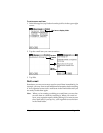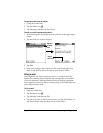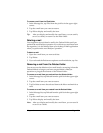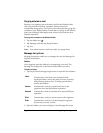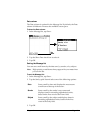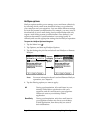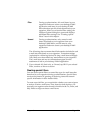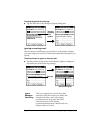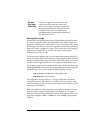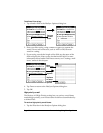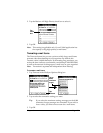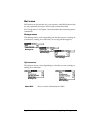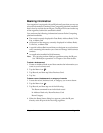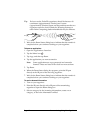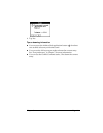
Chapter 5 Page 135
Defining filter strings
E-mail items are filtered based on the information contained in their
To:, From:, and Subj: fields. The information that defines what your
organizer is looking for is called a
filter string
. You create a filter string
by listing the words you want your organizer to find and separating
them with either a comma or a space. Each word in the filter string is
joined by an implicit OR, so you do not need to enter logical
connectors like AND or OR.
To create a more complex filter, you can define filter strings for the To:,
From:, and Subj: fields simultaneously. Your organizer joins the filter
strings for these fields using an implicit AND; once again, you do not
need to add the logical connector. Your organizer does that for you.
For example, suppose you want to receive only e-mail items from John
Smith (jsmith@aol.com) or Jack Jones (jjones@aol.com) concerning the
Apollo Project. You would create the following filter strings:
In the To: field:
jsmith@aol.com, jjones@aol.com
In the Subj: field:
Apollo Project
Your organizer interprets this as, “Accept e-mail items about the
Apollo Project from John Smith or Jack Jones. Do not accept e-mail
items from other people. Do not accept e-mail items from John or Jack
about any other subject.”
When you define a string, note that your organizer searches for any
instance of that
sequence
of characters. For example, if you create a
filter that retrieves only e-mail items containing the string “info,” your
organizer considers “
info
,” “ra
info
rest” and “k
info
lk” appropriate
matches.
Retrieve
Only Msgs
Containing
Tells your organizer to
include
only the
e-mail items that meet the criteria you
define and to ignore all other e-mail items
during synchronization. This filter has the
potential to block more e-mail during
synchronization because it downloads only
one subset of e-mail.



